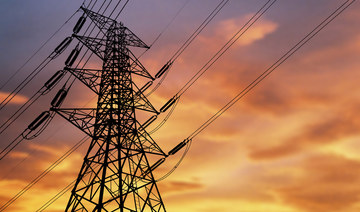PARIS: Steve Jobs may have been a tech genius, but he clearly didn’t care much for fashion.
Facebook boss Mark Zuckerberg has followed in his footsteps, sporting a plain grey T-shirt every day for years — only to swap it for a simple black suit to testify before Congress and the European Parliament.
But Silicon Valley, whose billionaires have long stuck to basic, functional apparel, may finally be starting to get a taste for something more extravagant.
Sensing an opportunity, French luxury titan Hermes has launched its 34th US store in Palo Alto, the ultra-rich beating heart of the world’s technological behemoths.
“We opened this new store after our San Francisco store reaped very strong results,” Hermes CEO Axel Dumas told shareholders in June.
“It’s also a bet on the future. Right now, you can see how residents often invest more in their cars than in their clothes. We hope to be able to change that a little,” Dumas added.
Guillaume de Seynes, a top executive at Hermes, sees great potential in Silicon Valley.
Palo Alto “isn’t very far away from San Francisco, where luxury is everywhere. However, the environment is very different. People are very focused on their professional success, working very long hours,” he said.
For now, that potential has yet to blossom, with Silicon Valley’s residents still mostly seen in jeans, T-shirts and trainers.
“If you really think about it, Steve Jobs had a disastrous dress sense,” Paris School of Luxury co-founder Eric Briones told AFP.
“And even if it’s starting to get a little better now, it’s still very simplistic. But that doesn’t stop (people) from earning billions!” he added.
Startup business leaders have had such a huge cultural impact that firms around the world have become more casual about clothing, Briones said.
“Nowadays, startup bosses are seen as the epitome of success. For them, clothing is utilitarian, functional and secondary,” he added.
“And if they wear a suit, they must be wrinkle-free, because they don’t have the time to preen themselves. They live in the moment, zipping from one plane to the next,” said Briones.
Until recently, few luxury houses had thought to venture out to Palo Alto. Today, three French giants — Hermes as well as Louis Vuitton and Cartier — have set up shop there.
In neighboring Santa Clara, high-end fashion addicts can find Christian Dior, Balenciaga and Yves Saint Laurent boutiques, all huddled together in a glitzy Californian shopping mall.
But just because they don’t necessarily wear designer clothing, the children of the digital revolution aren’t by any means new to luxury.
“This particular population segment... has already adopted luxurious lifestyle habits,” said Elisabeth Ponsolle des Portes of the Comite Colbert, which groups together 82 French luxury houses specializing in fashion, gastronomy, hotels and culture.
“They invest a lot in real estate, contemporary art, cars and charity. They also know a lot about wine and gastronomy,” she added.
Comite Colbert has entered into a partnership with the prestigious Stanford University, located in Silicon Valley. From September, artisans will teach students the coveted techniques honed over centuries by French goldsmiths.
In December, the group plans to welcome some 70 Californian industrialists and investors in Paris, where they will visit tailoring workshops and dine in Versailles — “unique experiences that money can’t buy,” Ponsolle des Portes said.
“We are planting a seed,” she said, adding that it wasn’t financial return that the firms were after.
Rather, her group wants to “to help (Silicon Valley residents) understand the difference between marketing-based luxury and the real thing.”
Beyond the beauty of the scarves and elegance of the bags and shoes, French luxury houses may also have another lesson in store for Silicon Valley giants.
According to Ponsolle des Portes, tech companies are intrigued by “the longevity of our enterprises.”
Hermes was founded in Paris in 1837, Cartier in 1947, and Dior in 1946.
Google was born in 1998, and Facebook in 2004.
“In the Silicon Valley business model, companies are ‘uberised’ within five years,” Ponsolle des Portes said.
French luxury giants dive into Silicon Valley
French luxury giants dive into Silicon Valley
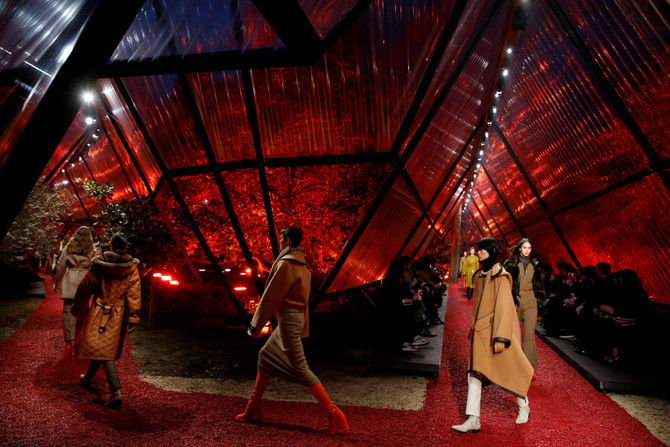
- Hermes, Louis Vuitton and Cartier open shops
- Silicon Valley billionaires known for t-shirts and jeans look
SEC closes $3bn financing for 3.6GW capacity power stations
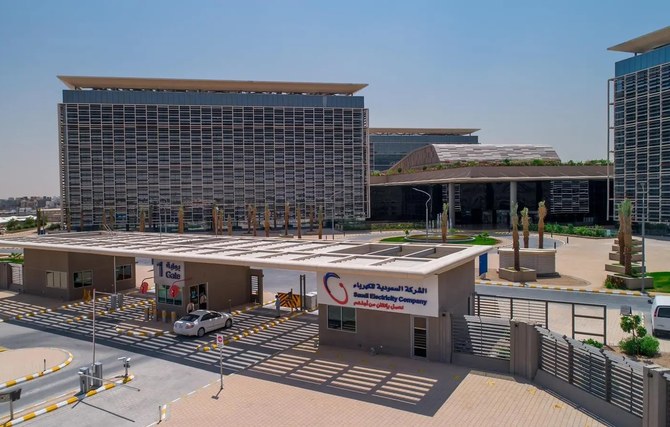
RIYADH: Saudi Arabia’s power generation is poised for a substantial boost following the successful closing of financing for two electricity projects, with a combined capacity of 3.6 gigawatts.
The deals involving the Taiba 1 and Qassim 1 independent power producer projects, with a combined financing value of SR11.4 billion ($3.04 billion), signify a major milestone in Saudi Arabia’s energy landscape, the Saudi Press Agency reported.
The two IPP projects, featuring combined cycle gas turbine technology, were awarded to the Saudi Electricity Co. by the Saudi Power Procurement Co. as part of an alliance with ACWA Power in October 2023.
Additionally, in November 2023, a 25-year power purchase agreement was signed with the SPPC for both projects, which are being developed on a build-own-operate basis.
Khalid Al-Qunun, CEO of SEC, commended the efforts of the company’s team in driving transformation in the electric energy sector in the Kingdom, the SPA report added.
He said: “These projects embody our ongoing ambitions to expand energy generation projects and adopt the latest technologies to ensure the provision of environmentally friendly energy solutions that contribute to achieving the company’s zero neutrality target by 2050, in line with the Kingdom’s ambitious aspirations in the field of energy sustainability.”
The financing agreements were signed by the two project companies: Sidra One for Electricity for the Taiba 1 station and Qudra Energy for the Qassim 1 station. The SEC holds a 40 percent share in both companies.
These modern stations represent a notable advancement in electric energy production in the Kingdom. They signify an important step toward a sustainable future by utilizing the latest energy production technologies, such as combined cycle gas turbines known for their high efficiency.
According to the SPA report, relying on these advanced technologies contributes to improving generation efficiency, reducing emissions, and reducing reliance on liquid fuels in the electricity production sector in the Kingdom.
These stations mark the beginning of a series of CCGT stations that will expedite the realization of Saudi Vision 2030 goals, including achieving an optimal energy mix and increasing local content.
This also sets the stage for achieving the goals of the Saudi Green Initiative, aiming for carbon neutrality by 2060. The engineering design of these stations allows for the future integration of carbon capture facilities, underscoring the SEC’s commitment to environmental, social, and governance responsibility, the SPA report added.
Qatar’s non-energy private sector records improvement in April

RIYADH: Qatar’s non-energy private sector witnesses improvement in business conditions in April as the Purchasing Managers’ Index hit 52, compared to 50.6 in March, according to the latest data.
The Qatar Financial Center PMI is a composite single-figure indicator of non-energy private sector performance that is derived from indicators for new orders, output, employment, suppliers’ delivery times and stocks of purchases. A reading above 50 signifies sectoral expansion, while below that mark indicates contraction.
The latest PMI survey data from the center compiled by US-based capital marker firm S&P Global showed that the 1.4-point increase between March and April in the headline figure was among the largest registered over the past two years, according to a statement.
Moreover, the data disclosed that while output, new orders, employment and purchasing activity all increased at faster rates than in March, price pressures turned slightly negative, as both input and output prices fell marginally.
Additionally, the volume of incoming new business in Qatar’s non-energy economy rose at the fastest rate in seven months in April. This is mainly attributed to new customers and high quality, competitive products.
Total activity also surged at the fastest rate since last September in April as new projects and firms continued to complete existing workloads.
Furthermore, non-energy private sector companies were increasingly optimistic on growth over the next 12 months in April. Companies residing in the Gulf country linked positive forecasts to marketing campaigns, business development plans and efficiency drives.
Consequently, stronger inflows of new work and increased confidence led to a sharper rate of hiring growth in April. Employment has risen for 14 months, and the rate of job creation was running above the long-run survey average in April.
The Qatar PMI indices are compiled from survey responses from a panel of around 450 private sector companies. The panel covers the manufacturing, construction, and wholesale as well as retail and services sectors, and reflects the structure of the non-energy economy according to official national accounts data.
Islamic banking
The total value of the assets of Islamic banks operating in Qatar during the month of March 2024 increased by 6.4 percent on an annual basis to reach about 563.9 billion Qatari riyals ($154.8 billion), according to newly released statistics.
The monetary bulletin issued by the Qatar Central Bank for the month of March showed that this recorded figure represents 28 percent of the total assets of banks in Qatar, amounting to approximately 1.99 trillion riyals.
The data also revealed that the total value of Islamic banks’ financing in Qatar increased to 389.9 billion riyals, an increase of 3 percent over the corresponding month of last year.
Saudi Arabia’s Ades secures $136.2m deals in Qatar, Egypt
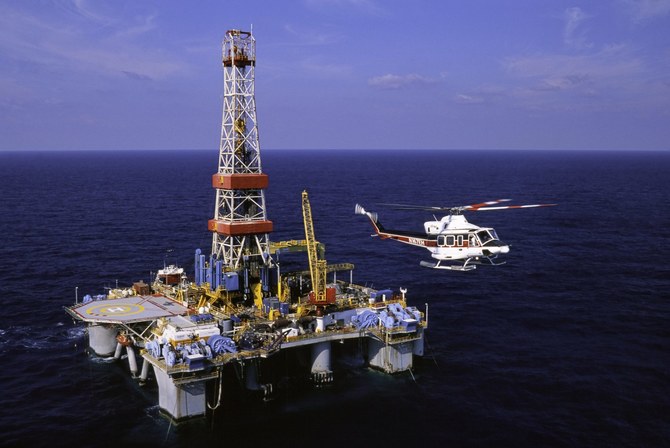
RIYADH: Saudi Arabia’s Ades Holding Co. continues to expand its regional footprint as it seals two contracts worth SR511 million ($136.2 million), highlighting its growing influence in the oil and gas sector.
Ades, which specializes in providing drilling and intervention services, signed a contract valued at up to SR350 million with Total Energies to operate an offshore drilling platform in Qatar.
The agreement includes a mandatory one-year period with an option to extend it for up to an additional 18 months, according to a bourse filing.
Operations are slated to begin in the second half of 2024. The company emphasized that there are no related parties involved in this contract.
This contract comes on the heels of April’s announcement, where Ades was awarded the responsibility to operate another offshore drilling platform by Total Energies in Qatar.
This previous contract enables Ades to maintain its market presence robustly, as it will now operate three drilling platforms in the region.
This expansion comes after the company’s strategic move to transfer its Emerald Driller platform to Indonesia.
Moreover, Ades announced in a separate release that it was awarded a 21-month contract to operate an elevated platform in the Gulf of Suez.
The company received a direct award letter from the Suez Oil Co, also known as SUCO, in Egypt, with operations expected to commence in the coming weeks.
In a statement on Tadawul, the company disclosed that the contract is valued at SR161 million.
This new engagement in Egypt is part of Ades’s broader strategy to reactivate its operations regionally. It follows recent contracts in Thailand and Qatar, bringing the total number of reactivated platforms to three out of the five that were recently suspended in Saudi Arabia.
The publicly traded company saw a slight decrease in its stock price after its announcements.
Saudi government assets to remain strong through 2030: S&P Global

RIYADH: The Saudi government’s assets are forecasted to remain strong amid steady economic diversification efforts aimed at reducing the Kingdom’s dependence on oil, stated a new report.
According to S&P Global, the increasing debt issuance to fund Vision 2030 projects may exert pressure on Saudi Arabia’s net asset position until the end of the decade. However, the Kingdom will mitigate this impact through its wise and prudent fiscal policies.
“S&P Global Ratings expects that growing debt issuance to finance Vision 2030 projects could pressure the sovereign’s fiscal metrics. In our base case, however, we expect the government’s net asset position will deteriorate but remain strong,” stated the credit-rating agency.
It added: “The ramp-up in fiscal deficits and debt could weaken the government’s balance sheet far sooner than returns on investment will accrue. Much will depend on the roles that foreign investment, the private sector, and capital markets will play in financing Vision 2030.”
According to the report, Saudi Arabia’s sovereign wealth fund, spearheading the Kingdom’s economic diversification efforts, aims to invest $40 billion annually in the local economy to bolster Vision 2030 goals.
The US-based firm highlighted that the Saudi government will continue to support the Public Investment Fund in various ways, including funding essential infrastructure for mega and giga project sites.
Domestic banks to play key role
Furthermore, S&P Global added that the Saudi government and PIF will try to boost external funding and diversify the investor base to mitigate the impact on domestic banks’ liquidity.
“We expect domestic banks will still play a key role in funding the public and corporate sectors, given the large size of projects. Domestic banks will likely see a shift from mortgage lending toward corporate lending and Vision 2030 project funding,” noted the credit rating agency.
However, the report added that the Kingdom’s banking system alone cannot accommodate all the financing needs associated with Vision 2030.
Banks in Saudi Arabia will use alternative strategies, such as raising additional external funding, to meet the increasing credit demand.
“In 2023, Saudi banks injected almost $55 billion in the form of investments and financing in the public and corporate sectors, excluding financing to the retail sector. In 2024, we expect banks will grow their lending book by 8 percent to 9 percent,” said S&P Global.
It added: “Under the assumption that 70 percent of that lending is for corporates, banks can inject $40 billion to $44 billion in financing. A portion of that could be used in Vision 2030.”
The report projected an approximate 8 percent increase in deposits for 2024, with external debt issuance expected to reach around $10 billion to facilitate anticipated lending growth.
Earlier this month, another analysis by the agency underscored the robust condition of the Saudi banking sector, highlighting strong asset-quality indicators and overall capitalization.
S&P Global further noted its expectation for banks’ solid profitability and conservative dividend payouts to sustain their capitalization over the next one-to-two years.
The report also noted that Saudi banks have already accessed international capital markets, a trend the credit-rating agency expects to persist for the next three to five years.
Furthermore, the Saudi government and its related entities are anticipated to inject deposits into the banking system, thereby bolstering the credit growth of financial institutions in the Kingdom.
Public and private investment
S&P Global also predicted that certain Vision 2030 projects will extend beyond this decade, facilitating a more organic increase in economic activity and foreign investment.
While PIF and the government will persist in debt-financed investment for Vision 2030, other government-related entities, including portfolio companies of the wealth fund, private-sector participants, and foreign direct investment, will also play crucial roles in implementing economic diversification projects in the Kingdom.
The report underscored that FDI inflows have averaged around 2 percent of Saudi Arabia’s gross domestic product over the past three years, with the Kingdom aiming to increase this to 5.7 percent by 2030.
According to S&P Global, the opening of free economic zones and the regional headquarters program could expedite the growth of FDI inflows in the coming years.
“Future FDI inflows could offer upside on the back of growing investment opportunities and government efforts to improve regulatory and business conditions. These efforts include the opening of free economic zones and a 30-year tax break for multinational companies opening regional headquarters in the country,” added the agency.
It underscored the role of the Saudi capital market in catalyzing the Kingdom’s economic diversification efforts.
The report highlighted that the Saudi exchange is collaborating closely with the Capital Markets Authority to streamline processes and attract both local and international issuers by enhancing market functionality and efficiency.
These initiatives by Tadawul will ultimately enhance the appeal of debt and equity transactions on capital markets and facilitate a more diversified funding base for Vision 2030 projects.
It also noted that the Saudi government possesses additional assets it could leverage to support Vision 2030 and prevent an expanding debt bubble. This includes an 82 percent stake in Saudi Aramco, which boasts a market capitalization exceeding $7 trillion.
“The government has thus far transferred a total 16 percent stake in Saudi Aramco to the PIF and its subsidiaries, which has substantially added to the PIF’s asset base, leading to dividend returns that it can deploy toward Vision 2030 projects. The government could choose to sell further stakes in Aramco through an IPO (initial public offering) to raise additional financing,” added the agency.
Pakistan’s benchmark share index rises as much as 1.5%
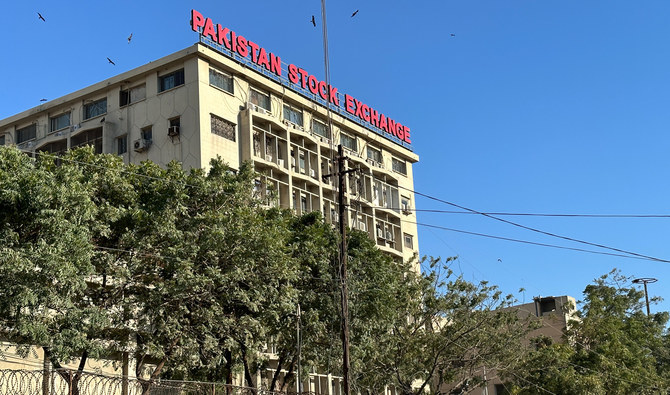
- Pakistan’s benchmark share index has surged 73.4% over the past year, up 12.9% year-to-date
- Market reacting to Saudi business delegation’s arrival, IMF statement on mission visit, says analyst
KARACHI: Pakistan’s benchmark share index rose 1.5% during intraday trade on Monday, to an intraday high of 72,986 points.
The index has surged 73.4% over the past year and is up 12.9% year-to-date.
A Saudi delegation arrived in Pakistan on Sunday for talks on trade and investment opportunities, particularly in the exploration and production sectors.
Adnan Sheikh, assistant vice president at Pak Kuwait Investment Company, said the market was up following news of the delegation’s arrival along with an IMF statement regarding a mission visit.
“The PSX is still very cheap with price to earnings ratio of under 5x compared to average of 8x,” Sheikh added.
Pakistan last month completed a short-term $3 billion program, which helped stave off sovereign default, but the government of Prime Minister Shehbaz Sharif has stressed the need for a new longer term program.
An International Monetary Fund mission is expected to visit Pakistan this month to discuss a program, the lender said on Sunday ahead of Islamabad beginning its annual budget-making process for the next financial year.
The IMF did not specify the dates of the visit, nor the size or duration of the program.
Earlier, in an interview with Reuters, Finance Minister Muhammad Aurangzeb said the country hoped to agree the outlines of a new IMF loan in May.
Pakistan is expected to seek at least $6 billion and request additional financing from the Fund under the Resilience and Sustainability Trust.




